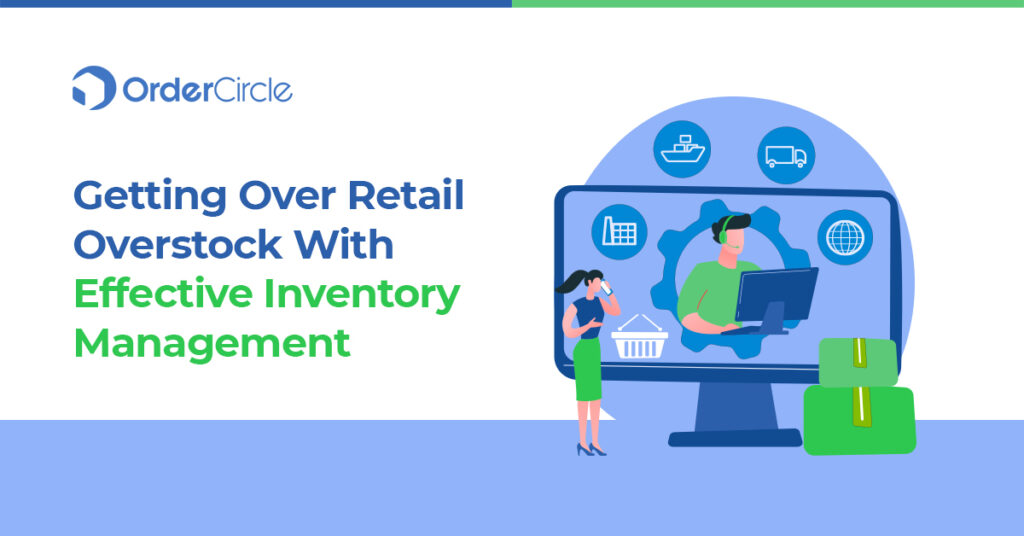Retailers have made significant investments in predictive analytics to promote precise purchasing. Nevertheless, businesses continue to experience serious overstock issues since even the most advanced models cannot account for unpredictable effects like COVID-19 and significant changes in customer demand brought on by supply chain delays, inflation, and rising interest rates.
One of the problems that come into play has been inventory overflow. Even though not a new one, the surplus inventory issue has caused retailers to discount their goods year after year. Big brands like Kohl reported retaining inventory worth $82 million in 2022, and Gap accounted for a 37% increase in surplus inventory.
Let’s walk down on Retail Overstock issue and deal with it once and for all.
The Problem of Overstocking
Tyco Retail Solutions reported that inventory distortion has been a billion-dollar problem for retailers. So, how do these numbers make sense? Here is how the problem of overstocking costing your business more than you thought:
- Roof-Touching Storage Costs:
One of the most obvious drawbacks of overstocking is the cost of storing excess inventory. Not only do warehousing expenses comprise the cost of renting a warehouse or storage facility, but they also include the cost of manpower to oversee your warehousing operations. According to McKinsey, businesses spend $300 billion annually on storage operations alone.
Additionally, the extra merchandise is costing you space as well. You lose money because they occupy valuable storage space that could be used to store items that sell well, in addition to the money you spend to stock the excess inventory.
- Decreasing Working Capital:
If you spend money on inventory, you won’t get your money back unless you sell the item. That basically means that when you overstock, your money is locked up in extra inventory. As a result, you have less operating capital to manage your firm, which could cause problems that worsen over time.
- Loss of Products:
Since many products have an expiration date, not being able to sell them for an extended length of time may result in inventory loss and, ultimately, financial loss. There is a considerable chance that you will have dead goods if you overstock. The danger of expiration or obsolescence is higher for perishable and time-sensitive commodities, which fall into this category.
Enter: Automated Inventory Management
With technological improvements and rising awareness in the order management world, brands are now rapidly shifting towards automation in inventory. Inventory, which has been a manual chore, is prone to mistakes and poor management of products. Overcoming surplus inventory and overstocking has finally found its cure. Here’s how automation will help you with overstocking:
- Automated Notifications
The human brain works like a machine and is yet susceptible to mistakes. Inventory errors, tracking of product levels, and losing sight of demand and supply have caused retailers to accumulate goods more than they needed.
An automated inventory system empowers you with real-time notifications. Excess stock? Understocked? Rise in demand? Get to know where your products are going (or not going). This enables businesses to prepare their sales teams accordingly to push out items before bringing in a fresh batch.
- Organized Cataloging:
Don’t rely on manual processes to manage your inventory any longer. You can let your clients browse your updated catalog online through the customer portal by uploading your products on inventory management software like OrderCircle. Each of your wholesale customers will have a more individualized experience thanks to the ability to browse custom prices, discounts, and other features from their own customer log in.
- Stock Adjustments:
Stock levels are like a volatile market going through uncertain ups and downs due to sales, intake, or inspection. In these cases, if your stocks are not adjusted on time, it could cause an imbalance in the inventory levels.
An automated inventory system has the provision to adjust these levels in real-time, without you having to keep track of it every second order comes in. This way your customers also do not get deceived about the product levels you offer.
- Data-based Inventory Management
Deep insights are the backbone of most businesses today. First-party data collected based on buying behaviors, popular clicks, and smart analysis is a major upgrade in automated inventory management.
This means, your sales teams know which products to push, your inventory team knows which products to reorder and you can oversee the right products are there in your inventory. Hence, there is a constant flow of orders in the inventory.
- Timely Tracking and Shipments
Improper inventory management can lead to losses in shipments and tracking delays. When products have the wrong cataloging or you have incorrectly marked products, your products end up staying back in the inventory. The result? Same old overstocking.
Automated inventory management tools can help you track your shipments right from leaving the warehouse, and accurate packaging till it reaches their destination.
Automate With OrderCircle
OrderCircle has been helping retailers from various sectors to manage their inventory through automation. Apart from all the above features, it has also introduced multicurrency facilities to enable your business to grow globally.
All you need to do is book a demo and try it for free for 14 days! Let’s get going then.

